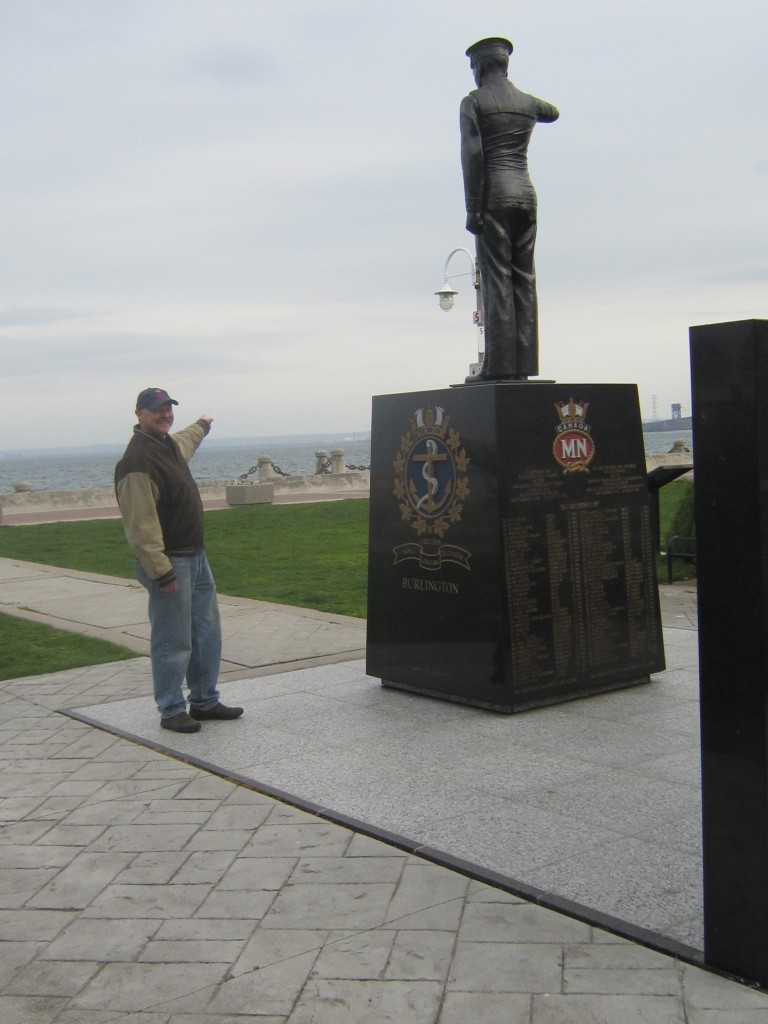Was it the weather?
Was it because May 1 is traditionally a day for the working people – a time when the men and woman who do the hard work that leaves muscles sore and backs aching.
May 1st turned out to be the first Sunday in May; a time when Canada celebrate and remember those lost in the Battle of the Atlantic
Canadians commemorated the 77th anniversary of the end of action in the Battle of the Atlantic and the sacrifices of the thousands of Canadians who fought valiantly from 1939-1945 during the longest campaign of the Second World War.
The Battle of the Atlantic was the longest Second World War campaign. Vice-Admiral Craig Baines, Commander of the Royal Canadian Navy, put it all too well when he described it as “cold, wet, dangerous. Fought with courage, dedication and honour. Our world today – who they were then, and who we are now is forever connected by their sacrifice.”

These were the ships that fought the Battle of the Atlantic, the longest naval battle in history. Shown here is HMCS Haida, currently tied up in Hamilton.
The Battle of the Atlantic began on September 3, 1939, with the sinking of the SS Athenia by German submarine U-30. Allied forces fought for control of the North Atlantic Ocean to supply the war effort from 1939 to 1945, making this the longest campaign of the Second World War
The RCN grew from a mere 6 destroyers and 3,500 personnel in 1939, to 373 fighting ships and more than 100,000 sailors by War’s end – one of the largest navies in the world.
Our sailors and airmen sank or shared in the destruction of some 50 U-boats while they escorted some 25 thousand merchant ships during the war to deliver more than 165 million tonnes of life & war-sustaining cargo to Europe in a merchant navy that became the world’s fourth largest.

Rick Wilson isn’t certain as to exactly where the battle for control of Lake Ontario took place but believes it was just offshore from the Naval monument.
These accomplishments were fueled by an impressive shipbuilding effort that saw more than 400 merchant ships built in Canadian shipyards that also churned-out 281 destroyers/corvettes & frigates, 206 minesweepers, over 250 tugs and over 3,000 landing craft.
In 1943, Rear-Admiral Leonard Murray was put in charge of the Allied Air and Naval forces in the Northwest Atlantic; the only Canadian to command an Allied theatre of conflict in either World War.
Throughout the Battle of the Atlantic, 24 Canadian of the 175 Allied warships were lost. 2,600 merchant ships including 62 Canadian vessels also met the same fate.
The human cost: more than 2,700 RCN/RCAF and 1,600 Canadian Merchant Navy personnel died.
Just weeks before the end of hostilities, HMCS Esquimalt was sunk and 44 died in the Halifax approaches, in April 1945.
Fought largely by reservists in small ships built in Canada and operating from Canadian bases, the defence of North Atlantic trade against the submarine menace defined a naval role for Canada within a much larger alliance. After 1945, the RCN became one of the best anti-submarine warfare navies in the world.
lmost 7,000 women served their country in a wide variety of crucial roles during the War.



















